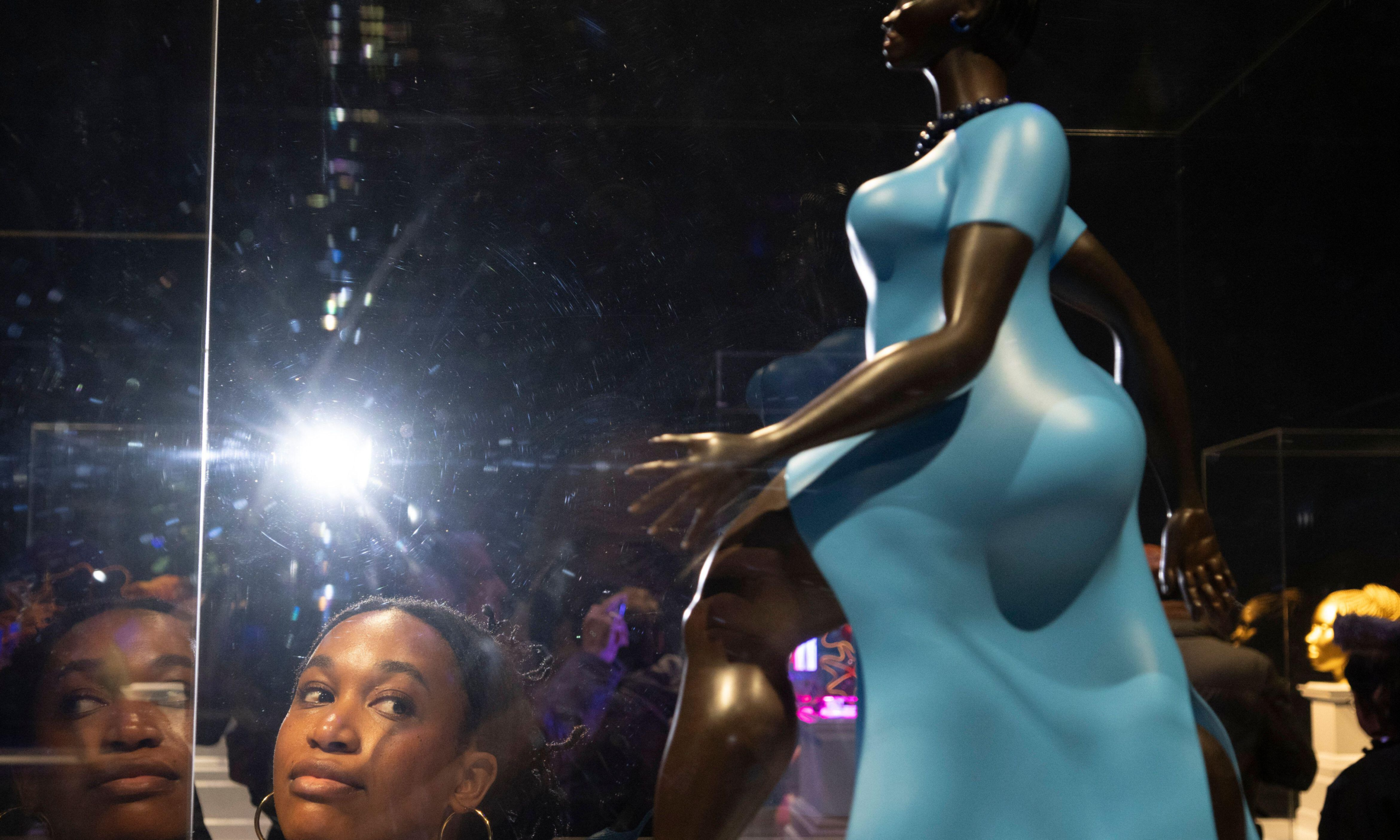Artist Tschabalala Self in front of her proposed 2028 fourth plinth commission, Lady in Blue
Credit: Malcolm Park/Alamy Live News
Thomas J. Price and Tschabalala Self are among the seven artists shortlisted for the next commissions on the Fourth Plinth in Trafalgar Square, London—one of the UK’s most important platforms for contemporary works. The other artists in the running for the 2026 and 2028 commissions are Chila Burman, Gabriel Chaile, Ruth Ewan, Veronica Ryan and Andra Ursuta. The two winning works will be announced next month.
Price’s piece, Ancient Feelings, depicts a fictional woman who is “serves as a symbol of collective community”, a project statement says. The artist tells The Art Newspaper that the work presents an “opportunity for people to see themselves. The work is not about conquering in war or victory. It is monumental in scale but not intent. It is a call to everybody out there who can sense the [current] lack of humanity.”
Veronica Ryan, who won the Turner Prize in 2022, has submitted a piece called Sweet Potatoes and Yams are Not the Same, presenting a “sweet potato island” with growing vine leaves. The proposal aims to highlight how a humble plant, which has its origins in Peru, draws attention to “today’s global conversations”. Asked about the challenge of creating a piece for the plinth in today’s climate, whereby monuments have become loaded political symbols, Ryan says that her piece is “anti-monumental”.
Tschabalala Self “pays homage to a young, metropolitan woman of colour who could be just one of many Londoners today” with her proposal Lady in Blue, the project statement adds. Chila Burman’s piece, The Smile You Send Returns To You, depicts her father’s ice cream van, The Rocket, which symbolises her family’s history of migration.
The Glasgow-based artist Ruth Ewan wants to unveil a sculpture of a cat on the Fourth Plinth (Believe in Discontent), evoking the early 20th-century Suffragist activists who were portrayed as cats in the media. Argentine artist Gabriel Chaile’s proposal is one of the most challenging works structurally, comprising the mud nest of the Hornero bird which dares to build its home on revered monuments and public sculptures.
The Romanian artist Andra Ursuta presents the most abstract form, a life-sized equestrian statue covered in a shroud and cast in slime-green resin. “The work points towards an uncertain future. It is made in a hyper-fragmented, paranoid time when public space, consensus and community continue to dissolve,” the project statement says.
The Fourth Plinth programme was initiated in 1998 by the RSA (the Royal Society for arts, manufactures and commerce) with the support of the Cass Sculpture Foundation.
Fourteen artists including Yinka Shonibare, Rachel Whiteread and Mark Wallinger have shown works on the plinth since the contemporary art initiative was launched in 1999. Samson Kambalu’s sculpture Antelope, depicting John Chilembwe who died fighting British rule, is due to remain in place until later this year. The Fourth Plinth is funded by the Mayor of London with support from Arts Council England and Bloomberg Philanthropies.
Antelope will be followed by Teresa Margolles’s 850 Improntas (850 Imprints), which will feature casts of the faces of 850 trans people from London and around the world presented in a form inspired by Mesoamerican sculptures.
Last year a British government minister, Ben Wallace, proposed erecting a statue of the Second World War code-breaker Alan Turing on the Fourth Plinth. Other UK politicians have also suggested that a memorial to the late Queen Elizabeth II could stand on the plinth.
Justine Simons, London’s deputy mayor for culture, says however that the plinth is booked up until 2028 at least, stressing that the Queen Elizabeth Memorial Committee will decide the fate of the memorial. The committee is expected to report recommendations to the Prime Minister and King Charles III in 2026.

